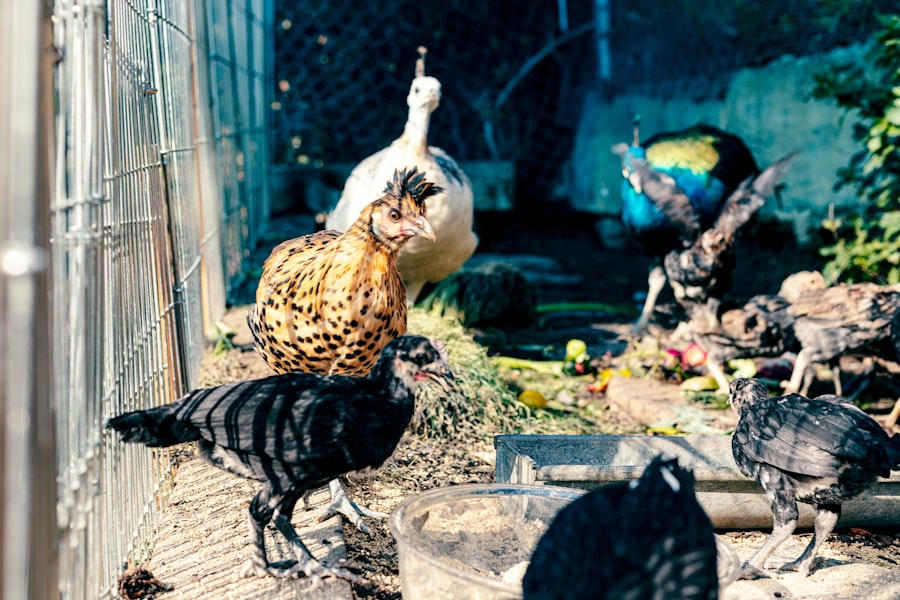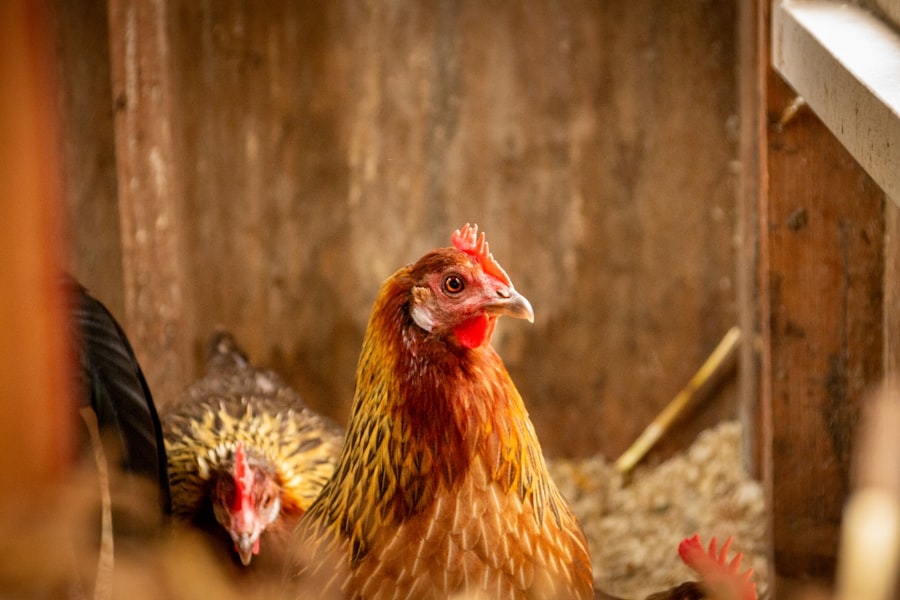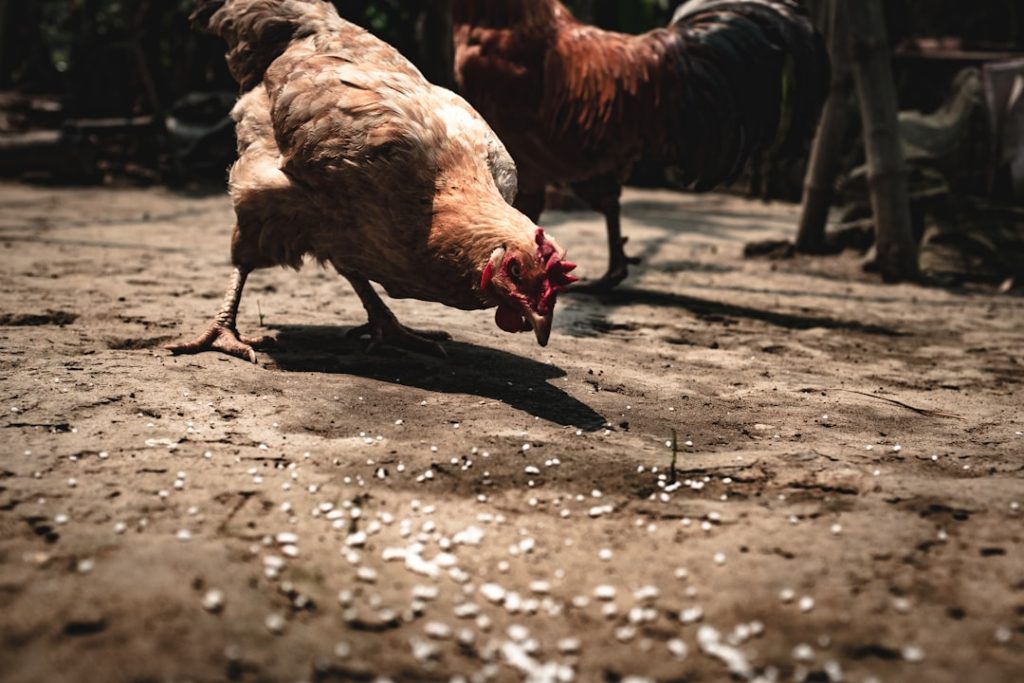Rodent infestations in poultry housing are a prevalent issue for many chicken keepers. Rats are drawn to chicken coops due to several factors, and their presence can significantly impact the health and safety of both the chickens and their human caretakers. This article examines the attractants that draw rats to chicken enclosures, the potential hazards associated with rat infestations, effective prevention methods, the advantages of maintaining a chicken flock despite rat-related challenges, and common misunderstandings regarding the interaction between chickens and rats.
By gaining a comprehensive understanding of these topics, poultry owners can implement proactive measures to minimize rat populations in their chicken coops and safeguard the well-being of their birds.
Table of Contents
- 1 Factors that attract rats to chicken coops
- 2 The potential risks of having rats in a chicken coop
- 3 Strategies for preventing rats in chicken coops
- 4 The benefits of keeping chickens despite the potential for rats
- 5 Common misconceptions about the relationship between chickens and rats
- 6 Conclusion and final thoughts
- 7 FAQs
- 7.1 What are the potential risks of keeping chickens in relation to rats?
- 7.2 How can chicken owners prevent rats from being attracted to their coop?
- 7.3 Are there any specific measures that can be taken to deter rats from the chicken coop?
- 7.4 Can keeping chickens in an urban area increase the risk of rats being attracted to the area?
- 7.5 Is it possible to keep chickens without attracting rats?
Key Takeaways
- Rats are attracted to chicken coops due to the presence of food, water, and shelter.
- Having rats in a chicken coop can lead to the spread of diseases, contamination of feed, and potential harm to the chickens.
- Preventing rats in chicken coops can be achieved through proper sanitation, secure coop construction, and regular maintenance.
- Despite the potential for rats, keeping chickens can provide benefits such as fresh eggs, pest control, and a sustainable food source.
- Common misconceptions about the relationship between chickens and rats include the belief that chickens will naturally keep rats away.
Factors that attract rats to chicken coops
Food Availability
One of the primary reasons rats are attracted to chicken coops is the availability of food. Rats are opportunistic feeders and will be drawn to chicken coops where they can easily access chicken feed, eggs, and even young or weak chicks. Additionally, the presence of food scraps and spilled feed can provide a readily available food source for rats.
Shelter and Nesting Opportunities
Another factor that attracts rats to chicken coops is the presence of shelter and nesting opportunities. Chicken coops provide rats with a warm and secure environment to build nests and breed, especially in areas with ample hiding spots such as hay bales, woodpiles, or cluttered areas.
Water Sources and Other Factors
Rats are also attracted to chicken coops due to the presence of water sources. Chickens require water for drinking and bathing, and if water is left standing or leaking in the coop, it can attract rats seeking hydration. Furthermore, the presence of other pests such as insects or mice can also attract rats to chicken coops. Rats are known to be scavengers and will take advantage of any available food source, including insects or mice that may be present in the coop.
Poor Maintenance and Environmental Factors
Poor coop maintenance and hygiene practices can also contribute to attracting rats. Cluttered or unkempt coops provide rats with ample hiding spots and make it easier for them to establish a presence without being noticed. Finally, environmental factors such as proximity to wooded areas or fields can also play a role in attracting rats to chicken coops. These natural habitats provide rats with additional food sources and shelter, making them more likely to venture into chicken coops in search of resources.
The potential risks of having rats in a chicken coop

Having rats in a chicken coop can pose several potential risks to both the chickens and their human caretakers. One of the primary concerns is the transmission of diseases. Rats are known carriers of various diseases such as leptospirosis, salmonellosis, and hantavirus, which can be transmitted to chickens through direct contact or contaminated food and water sources.
These diseases can cause illness and even death in chickens, leading to significant losses for poultry owners. Furthermore, rats can also pose health risks to humans through direct contact or exposure to their urine, feces, or saliva, potentially leading to serious health complications. In addition to disease transmission, rats can also cause damage to the infrastructure of the chicken coop.
Rats are notorious for gnawing on wood, plastic, and wiring, which can compromise the structural integrity of the coop and pose fire hazards due to exposed wiring. Moreover, rats are known to be prolific breeders, with a single pair capable of producing hundreds of offspring in a year. This rapid reproduction can lead to overpopulation in a short period, exacerbating the risks associated with having rats in a chicken coop.
Furthermore, the presence of rats can also lead to increased stress and decreased egg production in chickens, as they may feel threatened or anxious due to the presence of these predators. Overall, the potential risks of having rats in a chicken coop are significant and should be addressed promptly to ensure the health and safety of both the chickens and their caretakers.
Strategies for preventing rats in chicken coops
There are several strategies that poultry owners can implement to prevent rats from infesting their chicken coops. One of the most effective measures is to secure all food sources. This includes storing chicken feed in secure containers that are inaccessible to rats, cleaning up any spilled feed or food scraps promptly, and minimizing food waste by only providing chickens with as much feed as they will consume in a day.
Additionally, sealing off any potential entry points into the coop, such as gaps in walls or doors, can help prevent rats from gaining access to the coop. Using hardware cloth or wire mesh to cover vents and openings can also help deter rats from entering the coop. Furthermore, maintaining good hygiene practices is essential for preventing rats in chicken coops.
Regularly cleaning and disinfecting the coop, removing clutter and debris that can provide hiding spots for rats, and keeping the surrounding area free of standing water or leaks can help make the coop less attractive to rats. Implementing proper waste management practices, such as composting or disposing of manure away from the coop, can also help reduce potential food sources for rats. Additionally, implementing natural deterrents such as predator urine or essential oils known to repel rodents can help discourage rats from approaching the coop.
Moreover, practicing good coop maintenance is crucial for preventing rats in chicken coops. This includes repairing any structural damage or wear and tear that could provide entry points for rats, as well as regularly inspecting the coop for signs of rodent activity such as droppings or gnaw marks. Implementing traps or bait stations strategically around the perimeter of the coop can also help control rat populations if they are already present.
Overall, a combination of proactive measures such as securing food sources, maintaining good hygiene practices, implementing natural deterrents, and practicing good coop maintenance can help prevent rats from infesting chicken coops.
The benefits of keeping chickens despite the potential for rats
Despite the potential for rats to infest chicken coops, there are numerous benefits to keeping chickens that outweigh this risk. One of the primary benefits is a fresh supply of eggs. Chickens are prolific layers and can provide a daily supply of fresh eggs that are nutritious and delicious.
Additionally, chickens are excellent at pest control and can help keep insect populations in check around the property. They are known for eating insects such as ticks, mosquitoes, and even small rodents like mice, which can help reduce the overall pest population on the property. Furthermore, chickens are relatively low-maintenance animals that require minimal care compared to other livestock.
They are efficient converters of kitchen scraps and garden waste into high-quality fertilizer through their manure production. This natural fertilizer can be used to enrich garden soil and promote healthy plant growth without the need for synthetic chemicals. Additionally, chickens are excellent at tilling and aerating soil through their scratching behavior, which can help improve soil quality and promote healthy plant growth.
Moreover, keeping chickens can also be a rewarding hobby that provides opportunities for education and entertainment. Many poultry owners find joy in observing their chickens’ behavior and personalities, as well as participating in activities such as hatching eggs or raising chicks. Furthermore, chickens can provide a sense of self-sufficiency by producing a sustainable source of food for their caretakers.
Overall, despite the potential for rats to infest chicken coops, the benefits of keeping chickens far outweigh this risk.
Common misconceptions about the relationship between chickens and rats

Debunking the Myth of Cats as Rat Control
One common misconception is that having cats in close proximity to chicken coops will effectively control rat populations. While cats are natural predators of rodents and may help keep rat populations in check to some extent, they are not a foolproof solution for preventing rat infestations in chicken coops. Rats are known for their ability to adapt to predation pressure and may avoid areas where cats are present or become more elusive in their behavior.
The Dangers of Poison Baits
Another misconception is that using poison baits is an effective way to control rat populations in chicken coops. While poison baits may temporarily reduce rat populations, they pose significant risks to both chickens and other wildlife that may consume poisoned rodents. Additionally, using poison baits can lead to secondary poisoning if predators such as owls or hawks consume poisoned rodents, further disrupting the ecosystem balance.
Securing Food Sources is Not Enough
Furthermore, some poultry owners may believe that simply removing food sources from the coop will deter rats from infesting it. While securing food sources is an important preventive measure, it is not always sufficient on its own to prevent rat infestations. Rats are resourceful animals that can find alternative food sources in the surrounding environment if they are unable to access food within the coop.
Effective Strategies for Rat Control
Overall, it is important for poultry owners to be aware of these common misconceptions about the relationship between chickens and rats in order to implement effective strategies for preventing rat infestations in their chicken coops. By understanding the limitations of cats, poison baits, and food source removal, poultry owners can take a more comprehensive approach to keeping their chicken coops rat-free.
Conclusion and final thoughts
In conclusion, rat infestations in chicken coops pose significant risks to both the health and well-being of chickens and their human caretakers. Understanding the factors that attract rats to chicken coops, potential risks associated with rat infestations, strategies for preventing rats, benefits of keeping chickens despite the potential for rats, and common misconceptions about their relationship is crucial for poultry owners to effectively manage this issue. By implementing proactive measures such as securing food sources, maintaining good hygiene practices, practicing good coop maintenance, and being aware of common misconceptions about rat control methods, poultry owners can mitigate the presence of rats in their chicken coops and ensure a safe and healthy environment for their flock.
Despite the potential challenges posed by rat infestations, keeping chickens offers numerous benefits such as a fresh supply of eggs, natural pest control, low maintenance care requirements, sustainable food production, and opportunities for education and entertainment. By weighing these benefits against the potential risks associated with rat infestations and implementing effective preventive measures, poultry owners can continue to enjoy the rewards of keeping chickens while minimizing the impact of rat infestations on their flocks. Overall, with proper knowledge and proactive management strategies, poultry owners can successfully navigate the issue of rat infestations in chicken coops and maintain a thriving and healthy flock.
If you’re concerned about rats being attracted to your chicken coop, you may want to consider investing in a secure coop like the Snaplock Chicken Coop, which is designed to keep out unwanted pests. According to a related article on Poultry Wizard, a well-built coop can help prevent rats from being drawn to your chickens’ food and waste. By taking proactive measures to secure your coop, you can minimize the risk of attracting rats to your property. (source)
FAQs
What are the potential risks of keeping chickens in relation to rats?
There is a potential risk of attracting rats to the area where chickens are kept due to the presence of food sources such as chicken feed and eggs.
How can chicken owners prevent rats from being attracted to their coop?
Chicken owners can prevent rats from being attracted to their coop by ensuring that chicken feed is stored in secure containers, cleaning up spilled feed, and regularly collecting eggs to prevent them from becoming a food source for rats.
Are there any specific measures that can be taken to deter rats from the chicken coop?
Yes, chicken owners can take specific measures to deter rats from the chicken coop such as using rat-proof feeders, keeping the coop clean and free of debris, and sealing any potential entry points for rats.
Can keeping chickens in an urban area increase the risk of rats being attracted to the area?
Yes, keeping chickens in an urban area can increase the risk of rats being attracted to the area due to the availability of food sources and potential hiding spots in urban environments.
Is it possible to keep chickens without attracting rats?
Yes, it is possible to keep chickens without attracting rats by implementing proper management practices such as secure food storage, regular coop maintenance, and proactive rat prevention measures.
Meet Walter, the feathered-friend fanatic of Florida! Nestled in the sunshine state, Walter struts through life with his feathered companions, clucking his way to happiness. With a coop that’s fancier than a five-star hotel, he’s the Don Juan of the chicken world. When he’s not teaching his hens to do the cha-cha, you’ll find him in a heated debate with his prized rooster, Sir Clucks-a-Lot. Walter’s poultry passion is no yolk; he’s the sunny-side-up guy you never knew you needed in your flock of friends!







